Why Are Italy's Manufacturers Replacing Manual Handling with Pallet Inverters?
Are you watching your team manually transfer goods from one pallet to another? You probably see it as a normal part of the workday. But I see hidden costs piling up. Every minute they spend restacking boxes is a minute not spent on production. Every heavy lift is a potential back injury waiting to happen, leading to worker compensation claims and lost time. And every dropped or damaged product is a direct hit to your bottom line. These small, daily inefficiencies feel normal, but they are slowly draining the profitability of your operation. This is a problem that many factory owners overlook, but a growing number of savvy manufacturers, especially in a competitive market like Italy, are tackling it head-on. They have found a powerful, surprisingly simple solution: the pallet inverter.
Italian manufacturers are replacing manual handling with pallet inverters to achieve a powerful combination of goals. They are drastically increasing operational speed, significantly improving worker safety by eliminating heavy lifting, reducing costly product damage, and enhancing their ability to meet the strict hygiene and quality standards required for both the European and global markets. This single piece of equipment addresses key bottlenecks in efficiency, safety, and quality control.
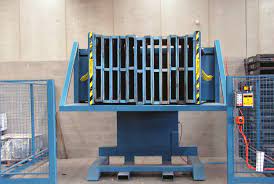
I've spent my entire career in the packing machine industry, first as an engineer and now as the owner of SHJLPACK. I've walked through hundreds of factories and I can tell you that the most successful ones are those that constantly look for hidden inefficiencies. The switch from manual handling to an automated pallet inverter is one of the most impactful changes I've seen. It looks like a simple upgrade, but its effects ripple through the entire production line. Let's break down exactly why this trend is taking hold in Italy and what it could mean for your own facility.
How Do Pallet Inverters Directly Boost Operational Efficiency?
Does your production line ever get held up by a slow process in the logistics or packing area? A team of two or three workers might spend 10 to 15 minutes manually unstacking and restacking a full pallet load. While they are doing this, a forklift is waiting, a truck might be idling at the dock, and the production flow is interrupted. This seems like a small delay, but when it happens multiple times a day, the lost time adds up to hours of wasted productivity and wages. Now, imagine reducing that 15-minute, three-person job to a 60-second task performed by a single operator. That is the immediate efficiency gain a pallet inverter provides. It’s a solution that turns a major bottleneck into a smooth, fast, and continuous part of your workflow.
Pallet inverters directly boost operational efficiency by automating the slow and labor-intensive process of transferring goods between pallets. This automation drastically cuts the time required from many minutes to under a minute, reduces labor costs by freeing up multiple workers, and allows for the seamless integration of pallet exchange into the production line, eliminating costly bottlenecks.
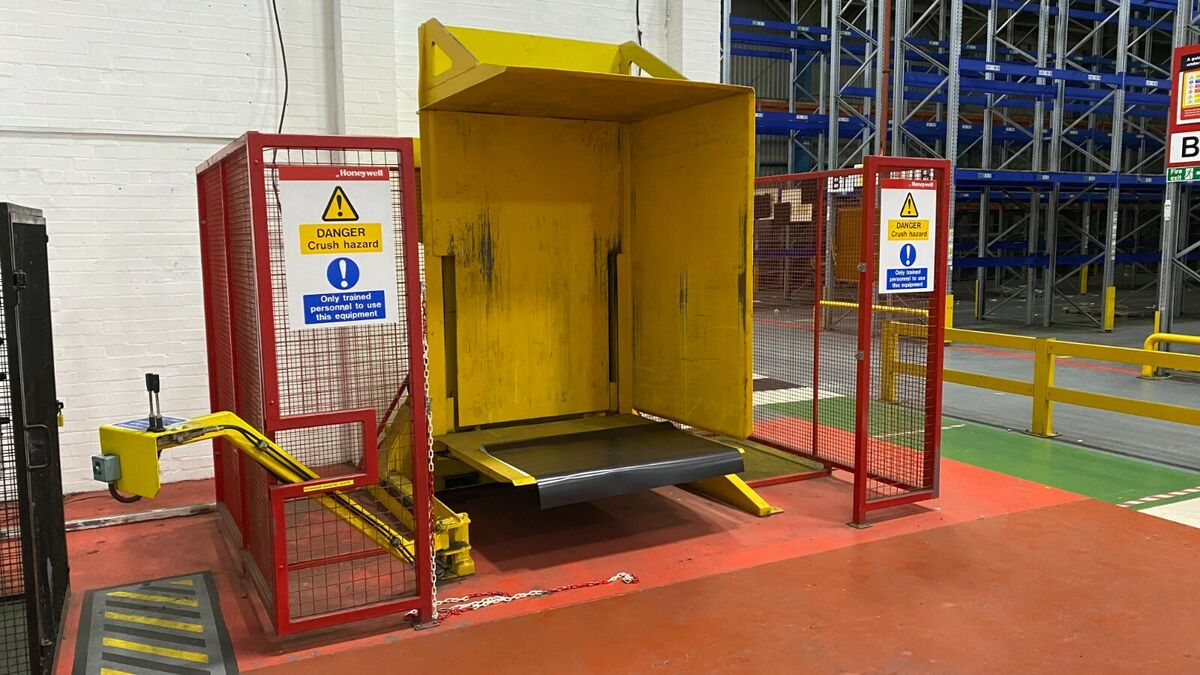
A Deeper Look at Efficiency Gains
When I first started my own factory, I watched every single process like a hawk. I had to. Every cent counted. One of the first things I noticed was the time wasted in our shipping department. We received goods on high-quality wooden pallets but needed to ship them out on cheaper, one-way pallets to save costs. The manual swap was a constant headache. This is a common problem, and the pallet inverter is the most elegant solution. Let's break down its impact further.
From Minutes to Seconds: A Time-Study Breakdown
The most direct benefit is speed. A manual transfer is not just slow; it's variable. The speed depends on the workers' energy levels, the weight of the boxes, and the stability of the load. A machine is consistent. It performs the same task in the same amount of time, every single time. This predictability is gold for anyone trying to implement smart scheduling or just-in-time logistics.
| Metric | Manual Pallet Transfer | Pallet Inverter Transfer | Impact |
|---|---|---|---|
| Time per Pallet | 10-20 minutes | ~60 seconds | Over 90% time reduction |
| Operators Required | 2-3 | 1 | 50-67% labor reduction |
| Equipment Needed | Manual labor, possibly a forklift | Pallet inverter, forklift/pallet jack | Frees up forklift for other tasks |
| Consistency | Low (depends on workers) | High (machine-controlled) | Enables predictable scheduling |
Reallocating Labor for Higher Value
In today's competitive environment, you don't want your skilled workers doing low-value, repetitive tasks. When a pallet inverter takes over the heavy lifting, you free up one or two employees per shift. These are not people you need to lay off. These are people you can now retrain for more critical roles. They can move into quality control, perform preventive maintenance on machinery, or manage inventory. I remember working with a client in the steel industry. He was worried about his aging equipment. By automating the pallet swapping, he was able to create a dedicated preventive maintenance team using his existing staff. This move alone helped him increase his overall equipment effectiveness (OEE) and reduce unexpected breakdowns. It's not about cutting jobs; it's about making the jobs you have more valuable.
Streamlining Inbound and Outbound Logistics
A pallet inverter acts as a perfect gatekeeper for your facility. Many companies in Italy do this. They receive goods on various types of pallets, some of which may be damaged or dirty. Before these pallets can enter a clean production environment, the load is quickly transferred to a standardized, in-house pallet. This is crucial for industries like food, pharmaceuticals, and electronics. The same is true for outbound logistics. You can transfer your finished products to a high-quality shipping pallet for a key customer or a cheap, lightweight pallet for export to reduce shipping costs. This flexibility gives you complete control over your pallet inventory and logistics costs.
What Are the Key Safety and Ergonomic Benefits Driving Adoption?
Think about the physical toll of manually restacking a pallet. A worker might have to lift and move fifty 20kg boxes. That's a ton of weight handled in a matter of minutes, often involving awkward bending and twisting. This is a recipe for disaster. Back injuries, shoulder strain, and repetitive stress injuries are among the most common and costly workplace incidents. These injuries don't just result in medical bills and insurance premium hikes. They lead to lost workdays, decreased team morale, and the difficult task of finding and training temporary replacements. You are not just managing a factory; you are responsible for the well-being of your people. Investing in equipment that removes these high-risk tasks isn't just a business decision; it's a moral one. A pallet inverter completely eliminates this dangerous manual process, protecting your most valuable asset: your employees.
The key safety and ergonomic benefit of a pallet inverter is the near-total elimination of manual lifting and handling of heavy pallet loads. By mechanizing the transfer process, it dramatically reduces the risk of musculoskeletal injuries, back strain, and other common workplace accidents, creating a safer and more sustainable work environment for employees.
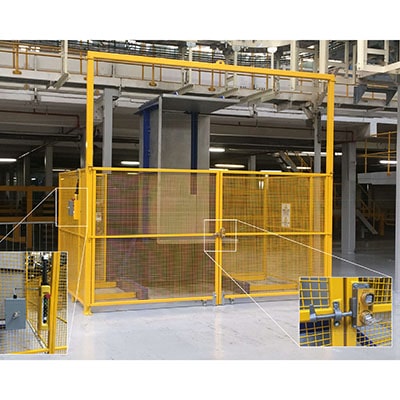
More Than Just Avoiding Injury
When I was a young engineer, I saw an older colleague suffer a serious back injury while moving heavy components. He was never able to return to his old job. That event stuck with me. When I started my own factory, I vowed to create the safest environment possible. Safety isn't an expense; it's an investment that pays dividends in loyalty, productivity, and peace of mind. The pallet inverter is a cornerstone of this philosophy.
The Hidden Financial Costs of Manual Handling Injuries
An employee injury is incredibly expensive, and the costs go far beyond the initial medical treatment. Understanding these costs helps justify the investment in safety automation.
- Direct Costs: These are the most obvious. They include workers' compensation payments, medical bills, and any legal fees. A single serious back injury claim can cost tens of thousands of dollars.
- Indirect Costs: These are often larger than the direct costs but are harder to quantify. They include:
- Lost Productivity: The time lost from the injured employee, as well as the time other employees and supervisors spend dealing with the incident.
- Replacement Costs: The cost of hiring and training a temporary or permanent replacement.
- Insurance Hikes: Your insurance premiums will likely increase after a claim, affecting your budget for years.
- Lower Morale: An unsafe workplace leads to stressed and fearful employees, which can decrease overall productivity and increase staff turnover.
Compliance with Strict Safety Standards
Manufacturers in Italy operate under stringent European Union workplace safety directives. These regulations place a strong emphasis on risk assessment and the elimination of hazardous manual tasks. A pallet inverter is a clear and demonstrable step towards compliance. For a business owner like Javier in Mexico, who deals with global markets, adopting these best practices is not just about meeting local laws. It shows international partners and customers that your operation meets world-class safety standards, which can be a significant competitive advantage. It signals that you are a reliable, professional, and responsible partner.
Creating a Better, More Modern Work Environment
Investing in technology that protects your workers sends a powerful message: "We value you." When employees see that management is actively working to make their jobs safer and easier, it builds trust and loyalty. A safer workplace is a happier and more productive workplace. In a tight labor market, a reputation for being a safe, modern employer can help you attract and retain the best talent. It changes the dynamic from a place where people perform manual labor to a place where people operate advanced technology.
How Does a Pallet Inverter Improve Product and Packaging Quality?
You invest heavily in your production process. You source the best raw materials, fine-tune your machinery, and train your staff to create a high-quality product. Then, in the final step before shipping, a worker accidentally drops a box while restacking a pallet. A corner is crushed, the packaging is torn, or the product inside is damaged. All that earlier effort is wasted. This is a frustratingly common problem with manual handling. Human error is inevitable, especially with repetitive, physical tasks. A pallet inverter protects your investment. It handles the entire load as one secure block, using gentle, controlled pressure. This systematic approach ensures that the product that leaves your factory arrives at the customer's door in the same perfect condition.
A pallet inverter improves product and packaging quality by replacing inconsistent and often rough manual restacking with a controlled, gentle, and secure mechanical process. This prevents accidental drops, crushing, and shifting of goods, ensuring that both the product and its packaging remain intact and presentable, which protects brand reputation and reduces waste.
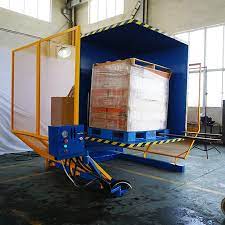
Protecting Your Product and Your Reputation
I learned a valuable lesson early in my career. A customer is not just buying your product; they are buying the entire experience, and that experience starts the moment your shipment arrives at their facility. A damaged box or a messy pallet immediately signals a lack of care. It undermines the perceived quality of what's inside. Protecting your product's integrity right up to the final moment is critical.
Eliminating the "Human Element" of Damage
People get tired. They get distracted. A task performed perfectly in the morning might be done carelessly at the end of a long shift. When restacking a pallet manually, products can be misaligned, boxes can be compressed, and the entire load can become unstable. A machine doesn't get tired. A pallet inverter applies the exact same clamping pressure and performs the exact same smooth rotation every cycle. This consistency is the key to eliminating the random, unpredictable damage that comes from human error. It transforms a high-risk manual task into a low-risk automated process, ensuring your quality standards are met 100% of the time.
Essential for Hygiene and Contamination Control
The reason pallet inverters are so popular in Italy's famous food and pharmaceutical industries is hygiene. Wooden pallets are porous. They can absorb moisture, harbor bacteria, and shed splinters or nails. They simply cannot be allowed in a cleanroom or food production environment. Manufacturers use pallet inverters at the entrance to these sensitive areas. Incoming goods arrive on a wooden pallet, are immediately inverted onto a sterilized plastic or metal pallet, and only then proceed into the clean zone. This creates a perfect barrier against contamination. For any business where hygiene is paramount, a pallet inverter isn't a luxury; it's a necessity for compliance and quality assurance. This process also serves to remove broken or substandard pallets from your internal workflow before they can cause problems.
Perfect Presentation for Customer-Facing Goods
Imagine you are shipping high-end consumer electronics or premium packaged foods. The appearance of the pallet upon arrival is the first physical interaction your customer has with that shipment. A neat, stable, and undamaged pallet conveys professionalism and quality. Manual stacking often results in leaning towers or uneven layers. A pallet inverter ensures the load is perfectly squared and stable after the transfer. This improves safety during transit and makes a much better impression. It shows your customer that you care about every detail, from manufacturing to final delivery.
What is the Real ROI of a Pallet Inverter for a Modern Factory?
As a factory owner, every major purchase has to be justified. You look at a pallet inverter and see a significant capital expense. It's natural to ask, "Is it worth it? When will I get my money back?" But if you are only looking at the price tag, you are missing the bigger picture. The true cost is what you are already spending every day on the inefficiencies of manual handling. It's the cost of wasted labor, the cost of workplace injuries, the cost of damaged products you have to write off, and the cost of production bottlenecks. A pallet inverter isn't an expense; it's a solution to these ongoing costs. The return on investment is often much faster than people think because it generates savings across multiple areas of your operation simultaneously.
The real ROI of a pallet inverter is calculated from a combination of hard cost savings and significant operational gains. It includes direct savings from reduced labor hours, lower insurance premiums, and eliminated product waste, as well as indirect returns from increased throughput, enhanced production flexibility, and a stronger safety culture, making it a highly profitable investment.
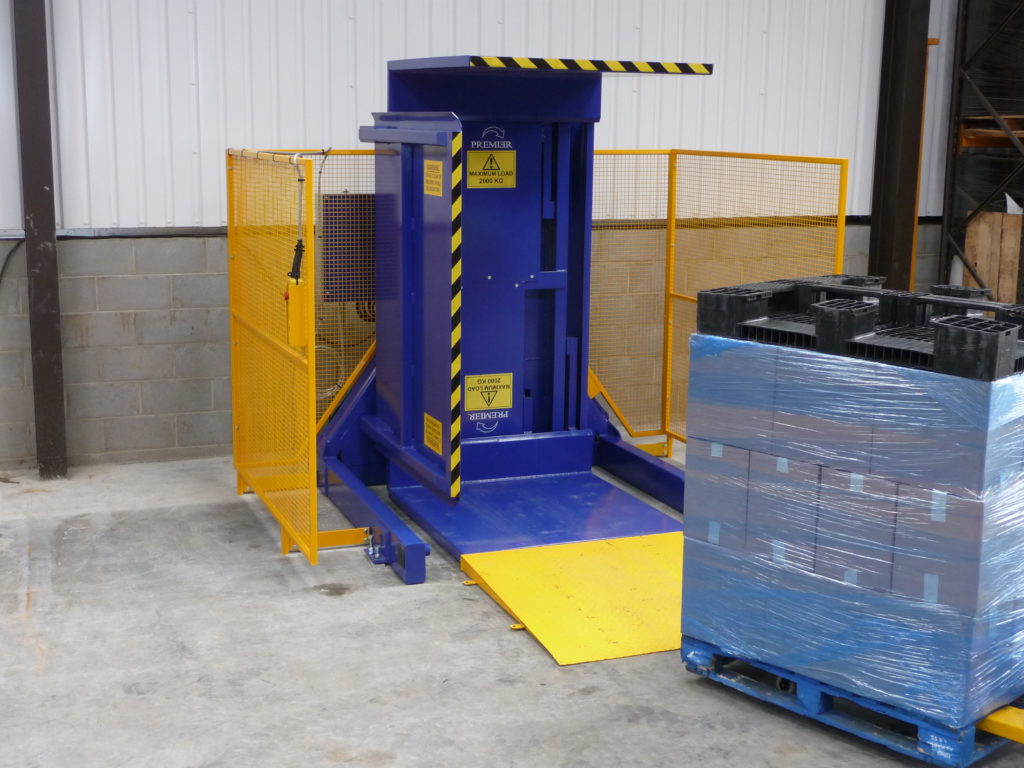
A Framework for Calculating Your ROI
I've been in the same seat as my clients. I know the importance of a solid business case. When I established my own factory, I had to be absolutely sure about every equipment investment. Let's walk through how to calculate the ROI for a pallet inverter, just as I would with a client like Javier. It’s a practical exercise, not just theory.
Hard Cost Savings: The Tangible Returns
These are the numbers you can easily track and present to your financial team.
- Labor Savings: This is the most straightforward calculation.
- (Number of workers manually swapping pallets) - 1 (the inverter operator) = Workers Freed Up
- (Workers Freed Up) x (Hourly Wage + Benefits) x (Hours per Day spent on this task) = Daily Labor Savings
- Injury Cost Reduction: Look at your safety records for the last 3-5 years.
- (Average cost of a manual handling injury claim) x (Number of incidents per year) = Annual Injury Cost.
- A pallet inverter can reduce these incidents by over 90%. That projected saving is a real number.
- Product Damage Savings: Review your credit memos and waste logs.
- (Value of goods damaged during manual handling per month) x 12 = Annual Waste Cost.
- Estimate a realistic reduction (e.g., 80-95%) to find your potential savings.
I once worked with a beverage company in Italy that was losing about 2% of its bottled product due to breakage during restacking. The number seemed small, but when we calculated the annual cost, it was staggering. The pallet inverter paid for itself in under 14 months on product savings alone.
Operational Gains: The Multiplier Effect
These benefits are less direct but can have an even bigger impact on your profitability.
| Gain | Description | Financial Impact |
|---|---|---|
| Increased Throughput | Faster pallet swapping removes a bottleneck, allowing more product to be processed and shipped per day. | Increased revenue and capacity utilization. |
| Improved Flexibility | Quickly swap to different pallet types for specific customers or shipping requirements without slowing down operations. | Ability to win new business with special requirements. |
| Enhanced Reputation | Fewer injuries and a more modern facility improve employee morale and attract better talent. Safer handling improves customer satisfaction. | Lower employee turnover costs and stronger customer loyalty. |
The real power of a pallet inverter is that all these benefits—labor, safety, quality, and speed—happen at the same time. The ROI isn't just one of these things; it's all of them combined.
Conclusion
A pallet inverter is more than a machine; it's a strategic tool for efficiency, safety, and quality. Choosing the right partner makes it a future-proof investment for your factory's growth.




